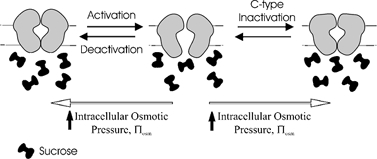Figure 1. The effect of osmostic pressure on ion channel behaviour.

When a solute too large to enter the pore mouth is added to the solution on one side of the membrane osmosis will result in withdrawal of water from the pore. There will be a resulting osmotic pressure on the channel, which will make channel states with smaller pore volumes more energetically favourable. Activation of voltage-dependent cation channels is believed to result in the formation of a large intracellular vestibule but involve only relatively minor changes in volume on the extracellular face (Jiang et al. 2002). Activation, therefore, should be relatively insensitive to applied extracellular osmotic pressure. C-type inactivation is thought to involve closure of the extracellular side of the pore. If this closure involves a substantial change in volume, then extracellular osmotic pressure should promote C-type inactivation. Activation involves the formation of a large water-filled intracellular vestibule. Therefore it should be relatively sensitive to applied intracellular osmotic pressure, with higher osmotic pressure favouring the closed state. Deactivation is the reverse process to activation, so should be affected by osmotic pressure to a similar degree. If C-type inactivation involves a substantial change in intracellular pore volume, then intracellular osmotic pressure should promote C-type inactivation. If the volume changes involved in activation/deactivation and C-type inactivation are similar then the rates of activation, deactivation, and C-type inactivation should be changed proportionately, despite their vastly different time scales.
